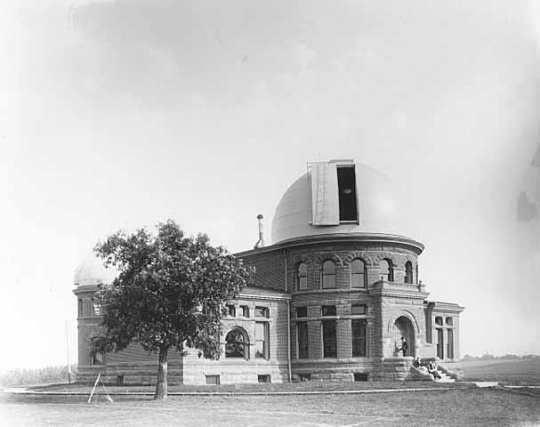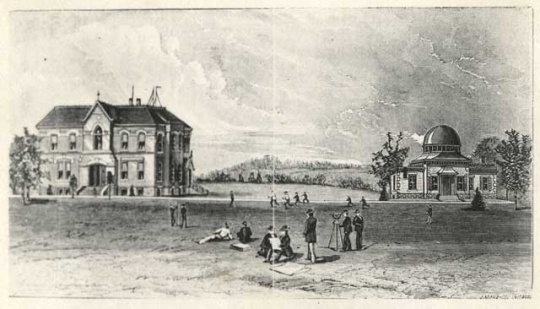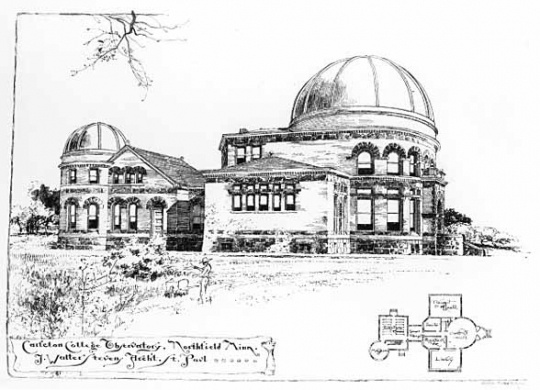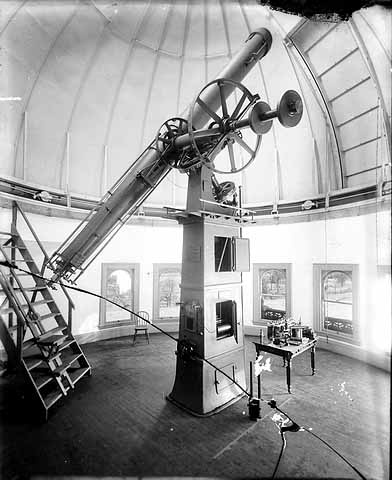The Goodsell Observatory and its predecessor, a smaller observatory that opened in 1878, helped keep trains running on time and brought national prominence to Carleton College in Northfield, Minnesota, in the late nineteenth century and early twentieth centuries.
William Wallace Payne, one of Carleton's original professors, taught mathematics and natural philosophy, and established a course in astronomy during his first year at the college. The course grew into a program, and Carleton's president and board of trustees agreed to construct a small astronomical observatory on campus. It was Carleton's fifth building. Though small, the observatory housed instruments of the highest quality, including an 8.25 inch refractor by Alvan Clark and Sons and a three inch Fauth transit circle.
Shortly after the small observatory opened in 1878, a telegraph line was established from Carleton campus to central Northfield, and the observatory began transmitting a time signal at three minutes to noon each day. The signal was based on astronomical measurements and was picked up by cities throughout Minnesota, as well as area banks, jewelers, and the various railroad lines of the Northwest, including the Northern Pacific and the Great Northern.
In 1886, the college purchased a brand new meridian circle with a gift of $5,000 from James J. Hill, whose railroads benefitted from Carleton's time service. The meridian circle was too big to fit in the existing building, so Carleton decided to build a new, larger observatory. The second observatory was designed by Harvey Ellis of the J. Walter Stevens architectural firm of St. Paul. It was completed in 1887 and named after one of the college's founders, Charles M. Goodsell.
By 1888, time signals from Carleton's Goodsell Observatory were used on more than 12,000 miles of railroad track. Railroad companies in the Northwest thought that the signal coming from Carleton was more accurate than the one transmitted by the United States Naval Observatory in Washington, DC. Accurate time was important for avoiding collisions and keeping trains running on schedule.
Goodsell Observatory was equipped with a 16.2-inch Brashear telescope in 1891 and a sidereal clock in 1910. The old observatory was made into a library and then torn down to make room for Laird Hall in 1905. The time service was continued until 1931 and the study of astronomy was prominent at Carleton well into the twentieth century.
Goodsell Observatory was placed on the National Register of Historic Places in 1975.









